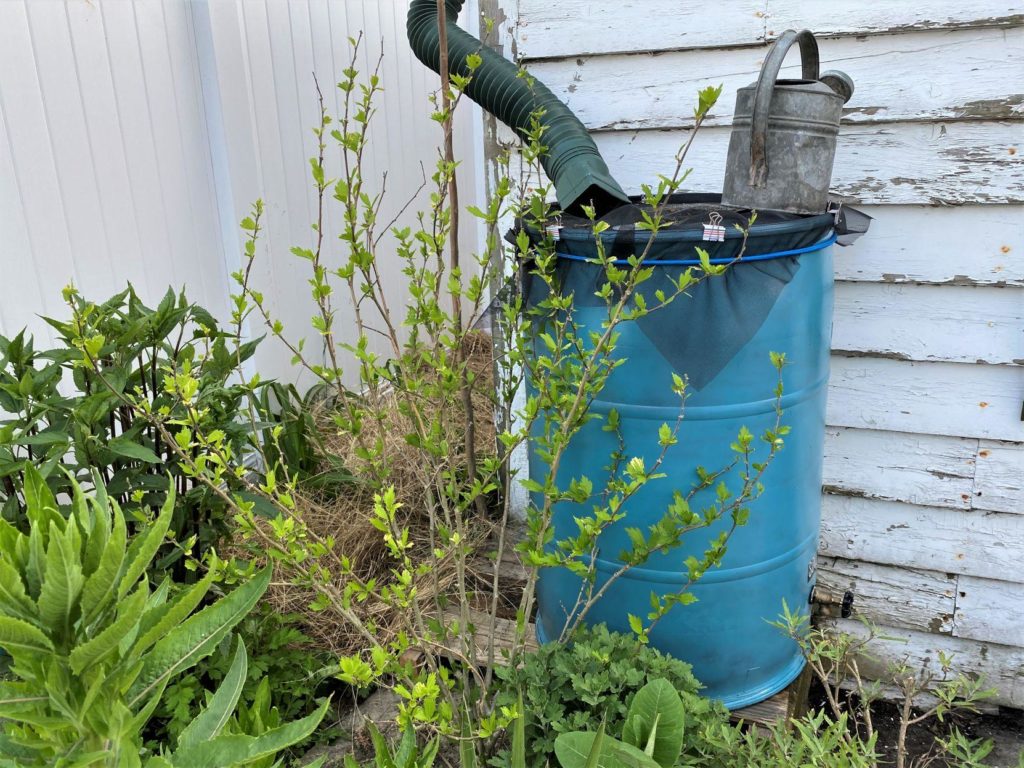
UPPER TOWNSHIP – Lisa Schroeder has given workshops on making rain barrels, but they usually include a hands-on element that was impossible May 27.
This time, she was giving her presentation remotely, in a virtual event presented by the Atlantic-Cape May Sustainability Hub.
Schroeder is the watershed ambassador for the Great Egg Harbor River watershed, under a program run through the state Department of Environmental Protection and AmeriCorps, a national community service organization.
As she explained at the start of the remote meeting, a watershed is all of the area that drains to a particular body of water. In this case, a large part of northern Cape May County drains to the Great Egg Harbor River, the dividing point between Cape May and Atlantic counties. The watershed also includes much of Atlantic and Cumberland counties.
“Typically, we do stewardship projects where we get volunteers together,” Schroeder said, but in-person gatherings remain out of reach due to COVID-19, and a project to collect data on water quality is also on hold.
“Right now, we’re doing a lot of the outreach and education virtually,” Schroeder said at the workshop.
There were some disadvantages to the remote format, which became clear as she tried to walk people through some of the steps of making their own rain barrel with photographs and descriptions. Some practical tips she would normally be able to demonstrate, she said.
“Typically, you’d be able to watch me do all that, and then you’d be doing it too, but alas, that is not what we’re able to do right now,” she said.
The remote format allowed those interested to view the workshop in real time and ask questions through messages or a chat feature. This meant a bigger turnout than usual, and the entire presentation is posted to the Facebook page of the Hub (https://bit.ly/3gY50lu).
The idea is simple – to collect water in the barrel when it rains to water gardens, lawns or for other uses rather than using municipal or well water.
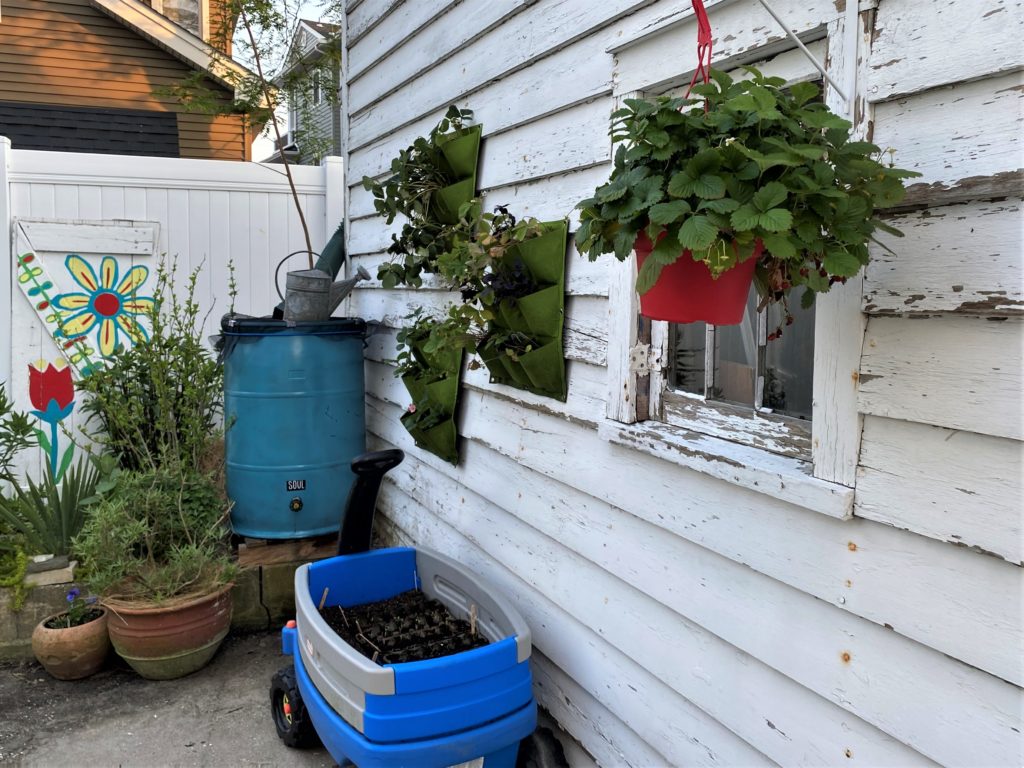
It means less water running into municipal drainage systems and less use of drinking water. In addition to use on plants, it can be used to wash the dog or a car, in birdbaths and multiple other ways. It should not be used on food or to wash dishes, she said. Before watering vegetables or using it in koi ponds, it should be tested, she said, but she described it as the “official” advice.
“I have heard unofficially and anecdotally, people use it on their vegetable gardens and it’s fine, but the official advice has to be you have to be careful if you’re using water that’s to be absorbed by edible plants,” she said. “If it’s outside, it’s probably getting rained on anyway.”
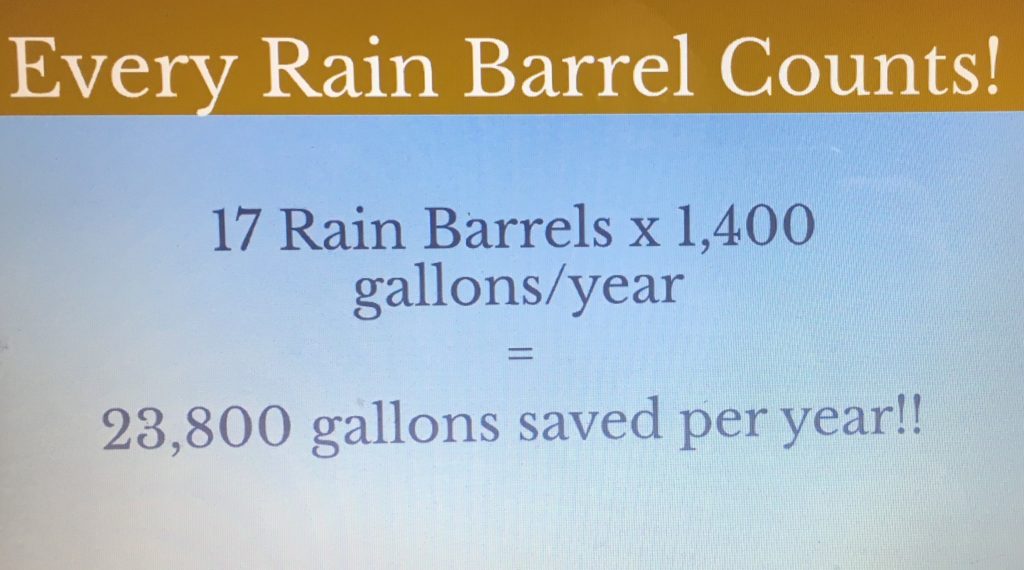
According to Schroeder’s hour-long presentation, each rain barrel collects an average of 1,400 gallons of water a year. If the 30 people watching the presentation installed one rain barrel and used the water, that would be 42,000 gallons of water in a year. That means much less water being pulled from wells and much less water contributing to potential floods, she said.
“Rain barrels may be small, but they’re a pretty mighty difference, especially when they start adding up,” she said.
It’s possible to have multiple barrels on a property, or line them up so that the overflow of one barrel in a heavy rain overflows to the next in line, and, in turn, to the one after that.
A fact sheet (https://bit.ly/3gZlbz5), prepared by the New Jersey Agriculture Experiment Station at Rutgers University, estimates an inch and a quarter of rain falling, an average storm, will drop 600 gallons of water on an 800-square-foot roof.
Much of Schroeder’s presentation focused on the pragmatic. Most people installing a water barrel put it at the bottom of a downspout, with the aluminum downspout cut to accommodate it. Most are plastic 50-gallon barrels, either purchased or donated. According to Ralph Cooper of the Upper Township Green Team, the Coca-Cola bottling plant recently donated several plastic barrels for the use of municipal residents.
It’s not quite a matter of putting a barrel in place and forgetting about it, though. As Schroeder outlined, there needs to be an overflow valve at the top, usually with a hose attached leading into the garden or lawn. At the bottom, she told participants, a faucet is placed where the water can be released and used.
The barrel should be off the ground, so that most of the water can drain out. This can be done with bricks, cinder blocks or by building a wooden stand, but it must be secure. Fifty gallons of water weighs more than 400 pounds.
The faucet installation is where Schroeder said it would be easier to work in person. She would usually have kits made up for workshop participants, including the faucet and the locking piece that will secure it inside the barrel.
Some people have long enough arms to reach in to install the faucet, but for most people, this part will mean climbing inside, while keeping in mind that any water in the barrel below the faucet will not drain out.
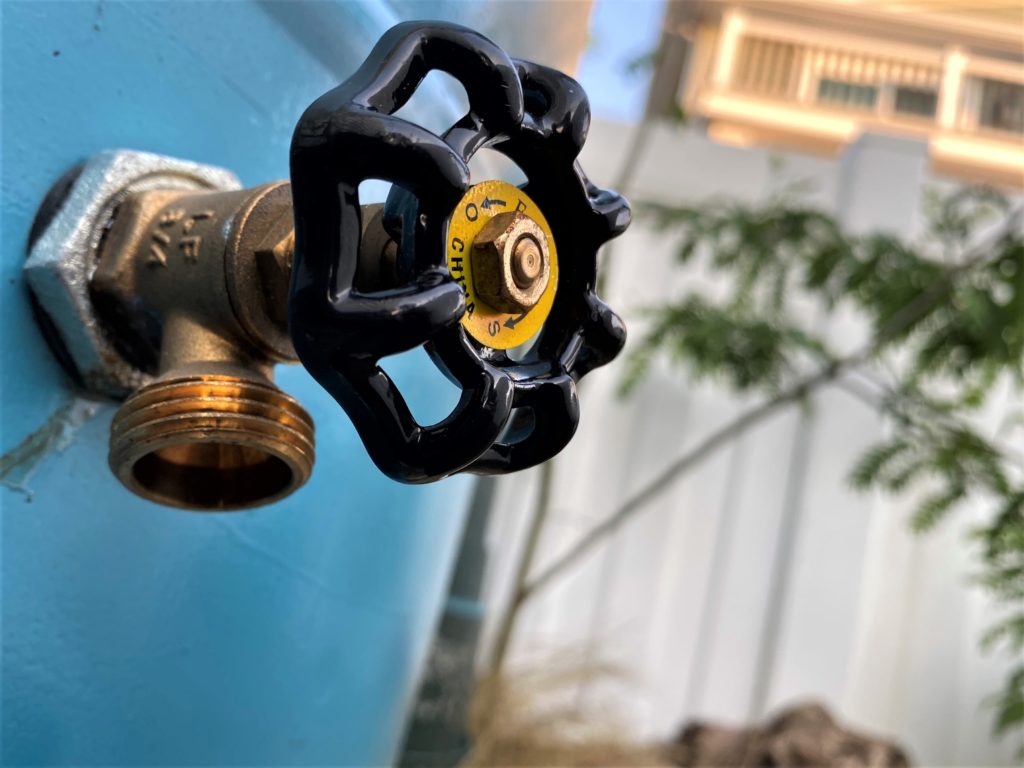
“You want your faucet to be as close to the bottom as you really can,” she said, but you still want it placed on a flat area.
Installation will involve cutting the downspout pipe, which, in most modern houses, is aluminum. She said, in New Jersey, the barrel should not be used in winter when it might freeze, so those planning to install one should plan on reattaching the cut section each year.
“You don’t want your downspout just ending, like, four feet up,” she said, where the water will drain toward the building’s foundation.
Then there is the question of mosquitoes in the summer, which love standing water, and they love it all the more when it is nearby some tasty human blood banks. Schroeder’s presentation includes installing a screen at the top of the barrel to keep insects and leaves out of the water.
Also, vegetable oil on the surface of the water will keep mosquitoes from landing on the water to lay eggs, and there are commercial products like Dunk that can be added to the water to prevent mosquitoes but will not hurt plants or wildlife.
She also suggested using the water within a week or so to prevent algae.
“It kind of has an expiration date,” she said.
Barrels should be cleaned regularly. It should also be used before the next rain arrives, if possible.
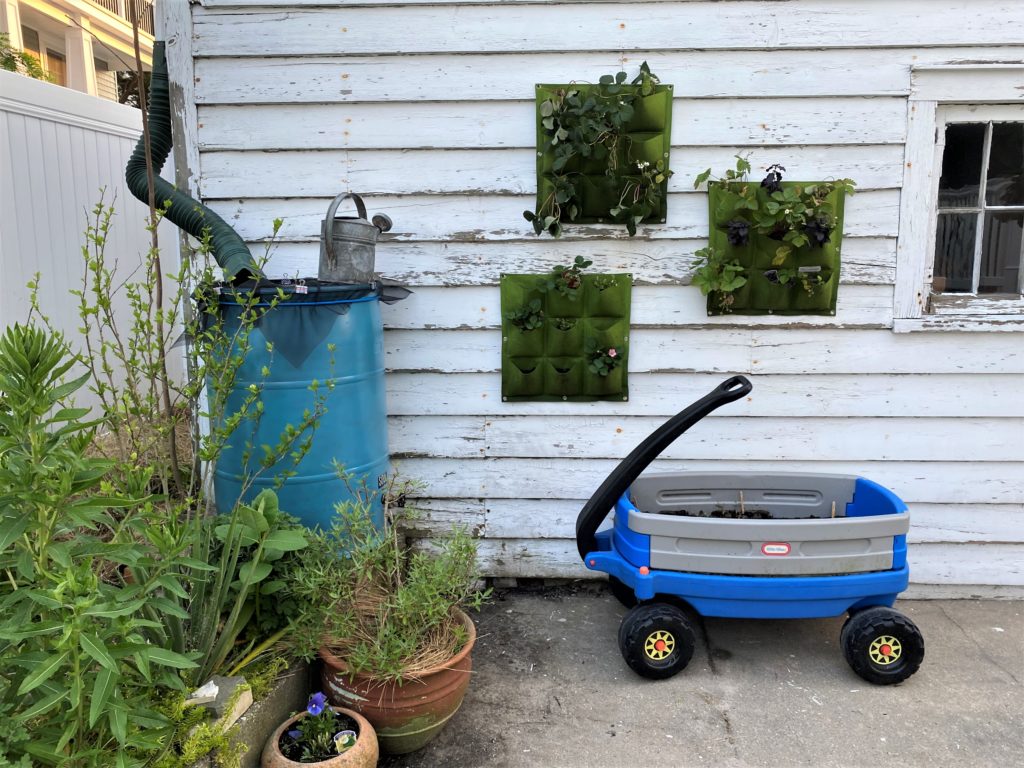
This story was produced in collaboration with CivicStory and the New Jersey Sustainability Reporting Hub project. It was originally reported by Bill Barlow for the Cape May County Herald, and may be re-distributed through the Creative Commons License, with attribution.
